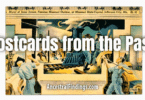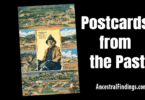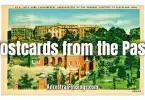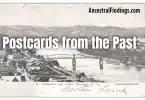Some postcards capture landscapes or landmarks; others capture a moment of pride. This one from Morgantown, West Virginia, does both. On the front, a yellow Personal Rapid Transit (PRT) car glides along its elevated guideway, the Appalachian hills forming a textured backdrop. On the back, a handwritten date—October 3, 1994—sits alongside the publisher’s mark from Paige Creations and a credit to photographer Janet Paige Bonsall. For me, those small touches are what make postcards feel like secret storytellers.
The Visionary Engineer Behind the PRT: Dr. Samy G. Elias
The Morgantown PRT didn’t emerge by chance. It grew from the determination of Dr. Samy G. Elias, chair of West Virginia University’s Industrial Engineering Department. In the late 1960s, Elias recognized Morgantown’s growing traffic gridlock and secured a $50,000 study grant from the Urban Mass Transportation Administration to compare different PRT concepts—ultimately choosing the Alden staRRcar design. His challenge was not just technical but political, rallying support from WVU, city leaders, and even West Virginia’s congressional delegation. With that, Morgantown became a federal test site for a new kind of transit system.
Thanks to Elias’s vision and leadership, the project drew support at the highest levels, including interest from then-Secretary of Transportation John Volpe and even President Nixon. Dr. Elias’s ability to bridge engineering, policy, and program management turned what could have been a small experiment into the nation’s first large-scale automated transit system.
The PRT in 2025: Engineering Legacy in Motion
As of 2025, the Morgantown PRT is still humming along—making it the oldest continuously operating automated transit system in the world. It carries about 12,000 riders daily, spanning five stations and nearly nine miles of concrete guideway, each lane carefully crafted to channel rubber-tired vehicles. The system has served millions of trips over the decades, and recent investments—including a $6.4 million DOT grant in 2024—ensure it remains structurally and operationally sound well into the future.
A Postcard and an Engineer’s Legacy
That’s why I love postcards like this one. They capture a moment—but when you look closer, they reflect the ambitions, the politics, and the bold innovation behind them. In this case, the card isn’t just a snapshot of a yellow car in motion—it’s a tribute to Dr. Elias’s enduring contribution to Morgantown, to WVU, and to American transit history.
Past and Present, Side by Side
The PRT may have been born of futuristic aspirations, but this postcard reminds us that the past—engineered, paper, and handwritten—can still move us today. And when I look at it, I remember that summer in 1989, riding that little car above campus and feeling a rush of that same future-forward thrill—one that Dr. Elias helped bring to life, and that still rolls quietly through Morgantown.
My Love of Collecting Postcards
I’ve always been drawn to postcards—especially ones that blend local history and personal narratives. Each card holds a life: someone decided it was worth buying, worth sending, worth saving. If you have postcards tucked away that you’d like to share, I’d love to add them to my collection. Just head over to AncestralFindings.com, click on Contact, and I’ll send you my mailing address.






